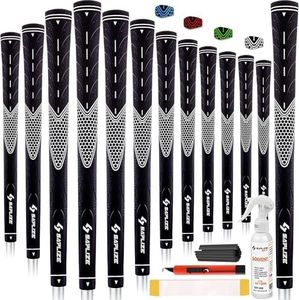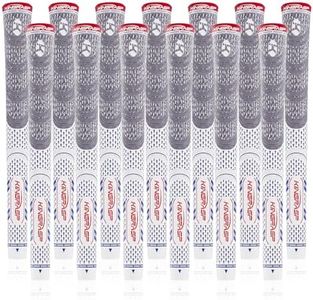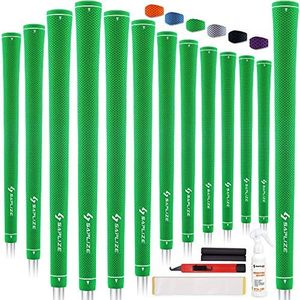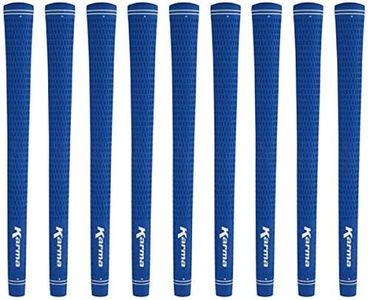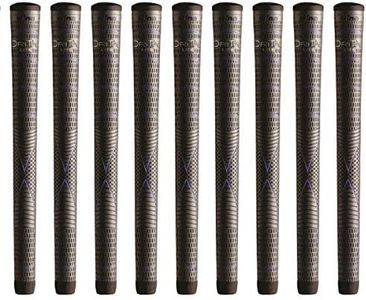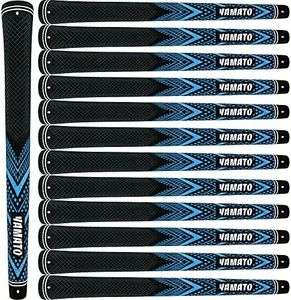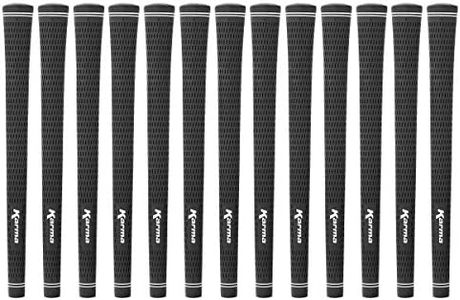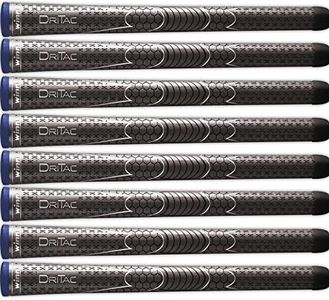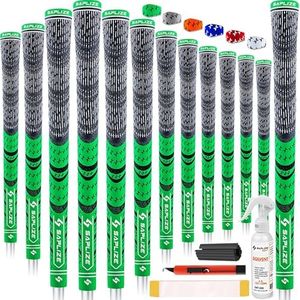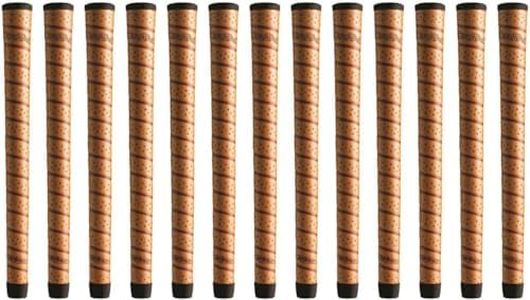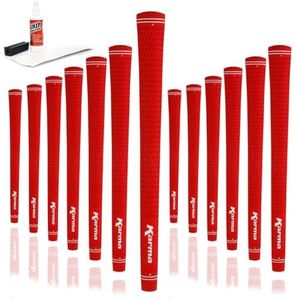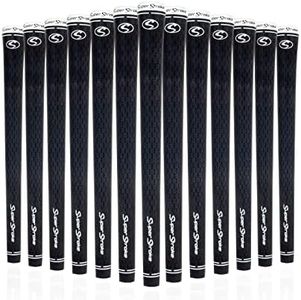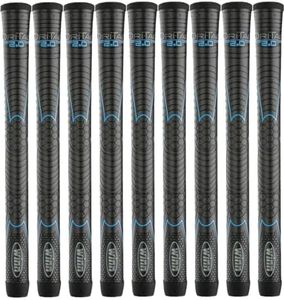We Use CookiesWe use cookies to enhance the security, performance,
functionality and for analytical and promotional activities. By continuing to browse this site you
are agreeing to our privacy policy
10 Best Midsize Golf Grips
From leading brands and best sellers available on the web.Buying Guide for the Best Midsize Golf Grips
Choosing the right midsize golf grip can make a noticeable difference in your comfort, control, and overall performance on the golf course. The grip is the only part of the club you actually touch, so finding the best fit for your hands and playing style is crucial. Take time to consider your hand size, swing style, and how much cushion or feedback you prefer, as well as how the grip performs in different weather conditions.Grip SizeGrip size refers to the diameter or thickness of the grip. Midsize grips are designed to be slightly thicker than standard grips, providing more surface area for your hands. This is important because the right size can help reduce tension in your hands and arms, promote a straighter or more consistent swing, and even alleviate discomfort or fatigue, especially for players with larger hands or those with arthritis. When choosing, consider how comfortable the grip feels in your hands; if your fingers barely touch your palm when wrapped around, it's likely a good fit. If your fingers dig into your palm, the grip may be too small; if there's a large gap, it might be too big.
Grip MaterialGrip material affects how the grip feels, how much traction it provides, and how it performs in wet or humid conditions. Common materials include rubber, synthetic, and sometimes leather. Rubber grips tend to offer good tackiness and moderate softness, synthetic grips often provide enhanced durability and weather resistance, while leather gives a classic, firm feel. Choose a material that feels comfortable, provides the right amount of grip for your climate, and suits your preference for firmness or cushioning.
Grip TextureTexture involves the pattern or roughness on the outside of the grip, which influences how securely you can hold the club without squeezing too tightly. Heavily textured grips offer more traction and are ideal for those who sweat a lot or play in wet conditions, while smoother grips may appeal to players who prefer a softer, more uniform feel. Think about your typical conditions and whether you want extra grip or a smoother feel in your hands.
Grip FirmnessFirmness is how hard or soft the grip feels in your hands. Softer grips can absorb more shock and are often more comfortable for golfers with joint pain or sensitive hands, but may wear out faster. Firmer grips provide more feedback and control, helpful for those who want to feel the subtleties of each swing. Pick based on your desire for comfort versus feedback, and consider any hand or joint issues you might have.
WeightThe weight of a grip can influence the overall balance and feel of your club. Lighter grips can make the club head feel heavier, potentially increasing your swing speed, while heavier grips can make the handle feel more substantial and stable. Think about whether you want to alter the feel of your current clubs: if you like a head-heavy sensation or want more swing speed, lighter might be better; if you appreciate a steadier, more controlled swing, a heavier grip could be preferable.
Alignment AidsSome grips feature alignment guides or markings to help you consistently position your hands on the club. This can be useful for beginners who want to ensure a repeatable grip, or for those working to correct grip flaws. If you value consistency and structure, or you’re in the habit of checking your grip on every shot, alignment aids might be an important spec for you.
